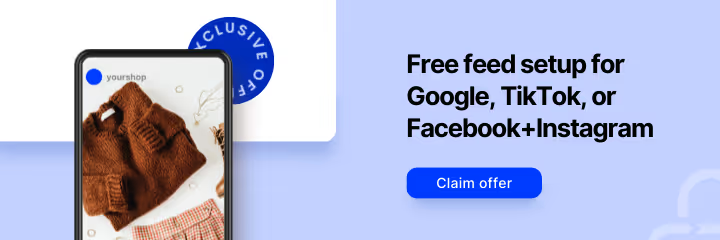While this means something a little different for just about every industry, these last two months represent a huge opportunity for any business. That’s why it’s so important to make sure you understand how to take full advantage of what Google Shopping currently has to offer.
It’s truly incredible how much power Google Shopping is giving to business owners. Whether you run a Fortune 500 company or are going at it alone, there is no way you won’t see greater profits if you put these nine Google shopping methods to use.
1. Work for Higher Google Quality Ratings
As a busy business owner, you probably don’t have time to go through all 157 pages of Google’s Search Quality Rating Guidelines. However, it explains in detail what Google wants its human reviewers to look for when judging the quality of a site, so it’s worth understanding what is revealed within these pages. Here’s a quick summary:
What Defines Quality Content Has Changed – We’re long past the days when creating content around certain keywords was good enough to get ranked. These days, Google cares a lot more about user intent, which means shorter content without exact-match long-tail keywords could beat out a much longer article if it does a better job of giving the user the information they want. When it comes to your product pages, you can do this by providing visitors with:
- Manufacturer’s Products Specs
- Original Content about the Item
- Reviews
- Information about Shipping and Returns
One way to get a sense for what Google thinks your market wants is to analyze the pages of top-ranking competitors. What information do they provide? How can you do even better?
Reputation Matters (a lot) – You probably already know that Google demotes sites with bad reviews. You probably know that backlinks are a major ranking factor, too. Both of these things point to the fact that Google relies heavily on what others think about your site. While it may be too late to take full advantage of this factor, use the rush of holiday shoppers this season to improve your company’s reputation. You can’t incentivize positive feedback, but you can encourage reviews. In doing so, you’ll have a massive advantage over any competitors who put off this essential task.
Prioritize the User Experience – The rest of the advice on this page really won’t matter if you don’t ensure you’re offering an optimal user experience. Google doesn’t want to send users to sites that don’t perform well. This means focusing on your site’s:
- Download Speed
- Logical Navigation
- Proper Font Size
Your site absolutely must be mobile-friendly, too.
Provide Supplemental Content – There are all kinds of ways you can improve the content you provide visitors other than through the typical format. Examples of supplemental content include:
- Granular Specifications
- Manuals
- PDFs
- Ratings
- User Reviews
- Videos
There are countless ways you can utilize these pages, but it would be a good idea to focus on helping your visitors:
- Browse alternate products
- Compare products
- Consider thorough descriptions
- Read user reviews
To play it safe, assume that visitors know absolutely nothing about what your business has to offer and then build supplemental content that will turn them into an expert.
In short, think about how it feels to be a customer. Recall the last time you were looking for a product or service. What would have made your life a lot easier? Use these answers when optimizing your Google Shopping approach.
2. Optimize Your Google Shopping Feed
When it comes time to upload your Google Shopping feed, it’s usually pretty tempting to simply pull a full list of your entire product database from your site and send it directly to the Merchant Center.
Do not do this.
This simple approach can lead to huge problems like products going unlisted, duplicate listings, and, worst of all, a Google Shopping account suspension – an extremely costly outcome during this time of year.
Instead, use a smart feed solution to ensure there aren’t any errors within your feed. Still, to be certain, go through your feed and sort your items by following a logical sequence of product descriptors like:
- ID
- Color
- Size
- Description
- Condition
- Availability
- UPC (Universal Product Code)/GTIN (Global Trade Item Number)
The ideal feed solution will continue to optimize your list over time, too. They will augment your SEO efforts by:
- Keeping your data feed complete
- Testing different descriptor options
- Testing different pricing layouts
3. Bid for PLAs on Google Shopping
Although bidding on Google Shopping PLAs (Product Listing Ads) may remind you of using AdWords, remember that you’re fighting for visibility on this platform, not position.
This is an important distinction to make because it means that higher bid amounts will broaden the range of match types for your products. Therefore, overbidding will just give your products exposure for irrelevant queries – a total waste of money.
So make sure you use negative keywords and the “Exclude SKUs” option to help cut down on search queries you want nothing to do with.
4. Use Custom Labels
While Google Shopping is plenty generous with their Custom Labels, that doesn’t mean you don’t have other options you should consider using. You can only create five of them, but they can each feature up to 1,000 values, so there is a lot of customization here.
Therefore, you have infinite ways to better track your listings, but this time of year, it would probably be a good idea to create labels for “winter” or “the holiday season.”
5. Display Your Products with Showcase Shopping Ads
Google introduced Showcase Shopping ads last year, but they’ve already proven to be a huge opportunity for companies that use them. Shoppers who engage with this type of advertising are more likely to consider the corresponding brand as they begin to narrow down their search. In fact, after a shopper expands a company’s Showcase Shopping ad, they search for that brand’s terms twice as much.
Furthermore, they give businesses an incredibly easy way to offer the type of mobile-friendly purchasing experience Google absolutely loves, which also allows them to display more than one product at once!
That last piece is incredibly important. Sure, showing customers more than one product at a time could increase profits all on its own. However, the reason this works so well is because over 40% of searches made with buying-intent are for broad-match terms.
When someone types in “patio furniture”, they may have a number of ideas in mind. So Google’s Showcase Shopping ads show them a number of possibilities at a time.
6. Local Display Ads for In-Store Items
If you run a local business, you’re already well aware of some of the challenges you face compared to those who have national or international customers.
Fortunately, Google hasn’t forgotten about you. A good example of this is their local display ads, which will allow you to put in-store products and sales in front of potential customers – even if you’re not actually selling them online.
That said, you’ll have to do a little work to benefit from this feature.
First, you need to create a local inventory feed.
Then, you have to contact your Google account team to get access to the pilot program. You could also wait until the service is rolled out to a broader audience, but why not take this opportunity right now while your competitors may still be in the dark?
7. The Opportunities Tab
Another great feature Google recently rolled out is their AdWords Opportunities Tab. This is a new section that has been added for the sole purpose of helping users improve their campaigns at no extra cost.
Going forward, when Google Shopping introduces new features, they’ll be introduced in the Opportunities Tab.
Even better, Google will constantly keep track of your AdWords account and make recommendations on how you can improve its results based on things like:
- Ads
- Bids
- Budget
- Keywords
Best of all, you don’t need to spend hours on analysis every week to look for these opportunities. Google is going to prove them to you for free.
8. Find Out How Often Your Ads Are Earning the Absolute Top Impression Share
The left-most ad that shows up in mobile shopping results earns as much as three times the engagement as the rest. This position is often referred to as, “absolute top.”
Google will now show you how often your ads received the absolute top position. Just find the “abs. top IS” column to see how often this happened.
Given how much greater your chances are of converting when your ads are in the absolute top, this new metric will give you a valuable new dimension for evaluating their success.
9. Make Automation a Top Priority
Finally, even with all of the new ways Google Shopping can now better help your business, you still need to do some work on your own. Of course, if you leverage automation, you can greatly reduce how much work is required without sacrificing results.
An easy one to make sure you’re using is automated bid management. If you have a large account, this is a no-brainer. Trying to manage your bids at scale may be nearly impossible. You could do this at the keyword, group, or campaign level.
Google’s smart bidding umbrella offers a number of conversion-based strategies that use advanced machine learning to make changes based on real-time signals that include:
- Device
- Language
- Location
- Operating System
- Remarketing List
- Time of Day
Here are some basic strategies to get you started:
- Target CPA Bidding – Set bids that will improve your conversion rate at a set target cost per acquisition (CPA).
- Target ROAS – Choose a target return-on-ad-spend (ROAS) to improve conversions or revenues.
- Enhanced CPC – This feature will automatically find ad auctions that may produce better conversions and then increases your max CPC bid.
- Max Conversions – This method looks at contextual signals and historical data to automatically figure out the ideal CPC bid.
You can make even more of your automation options by utilizing AdWord scripts.
These scripts can automate common procedure (e.g. modifying bids) or even act on external data you may have. One very popular time-saver is to automate the bids of Google Shopping product groups.
Google Shopping Is Here to Help – Let It
Far too often, online merchants view Google as the enemy. They look for ways to “game” the rules or figure out ways to profit despite Google’s perceived best efforts.
However, the truth is that Google Shopping is really here to help. They have been incredibly upfront about what they want vendors to offer their users, so as long as you take the time to learn about these requirements, you should have no problem enjoying greater profits.As you just saw, there are nine really easy ways you could begin doing so right now, in time for the holiday season.




%20).png)

